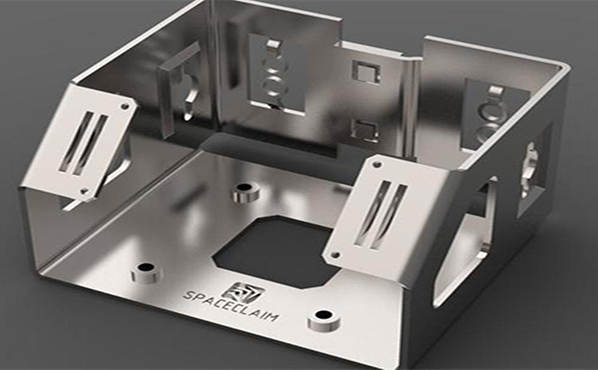Sheet Metal Additive Manufacturing: Revolutionizing Production Techniques+ View more
Sheet Metal Additive Manufacturing: Revolutionizing Production Techniques
+ View more
Date:2023-11-22 11:00
Introduction
Traditional sheet metal manufacturing has long been a staple in various industries, but the emergence of additive manufacturing, commonly known as 3D printing, is revolutionizing production techniques in the sheet metal sector. This article delves into the advancements and potential of sheet metal additive manufacturing, exploring how it is reshaping design possibilities, reducing lead times, improving material utilization, and pushing the boundaries of what can be achieved in sheet metal production.

Understanding Sheet Metal Additive Manufacturing
Sheet metal additive manufacturing involves the layer-by-layer deposition of materials to create complex geometries directly from digital designs. By utilizing different additive manufacturing technologies, such as selective laser melting (SLM) or electron beam melting (EBM), manufacturers can produce intricate and customized components with high precision. This transformative process offers advantages over traditional subtractive methods by reducing material waste, enabling rapid prototyping, and facilitating design complexity.
Design Freedom and Complexity
One of the significant advantages of sheet metal additive manufacturing is the unprecedented design freedom it offers. Unlike conventional manufacturing methods that are limited by tooling constraints, additive manufacturing allows for the creation of intricate shapes and internal structures that were previously unattainable. With the ability to build complex geometries layer by layer, designers can optimize parts for weight reduction, structural integrity, and enhanced performance. This design freedom unlocks new possibilities and opens doors to innovation in sheet metal production.
Reduced Lead Times and Increased Efficiency
Sheet metal additive manufacturing significantly reduces lead times compared to traditional fabrication methods. By eliminating the need for complex tooling and setups, manufacturers can swiftly move from concept to final production. Rapid prototyping enables faster iterations and quick feedback loops, enhancing product development cycles. Additionally, consolidation of multiple components into a single part through additive manufacturing reduces assembly time and simplifies production processes, leading to increased efficiency in overall manufacture.
Material Utilization and Waste Reduction
Sheet metal additive manufacturing optimizes material utilization, resulting in reduced waste. Unlike subtractive methods where excess material is typically discarded as scrap, additive manufacturing builds parts layer by layer, using only the necessary amount of material. Moreover, the ability to recycle and reuse powdered materials in some additive processes contributes to further waste reduction. This sustainable approach aligns with environmental goals and helps minimize the ecological impact of sheet metal production.
Material Advancements and Process Optimization
As sheet metal additive manufacturing continues to advance, new materials tailored for additive processes are being developed, expanding the range of feasible applications. Materials such as titanium, aluminium alloys, and high-strength steels are now viable options for additive manufacturing, enabling the production of lightweight yet robust components. Furthermore, ongoing research and development efforts focus on process optimization, aiming to enhance surface finish, accuracy, and mechanical properties of additively manufactured sheet metal parts.
Challenges and Considerations
While sheet metal additive manufacturing presents numerous benefits, there are challenges that need to be addressed. These include the need for skilled technicians with expertise in additive manufacturing processes and design principles, as well as the initial capital investment required for acquiring and maintaining additive manufacturing equipment. Additionally, ensuring consistent part quality, validating process repeatability, and meeting industry standards and regulations pose ongoing challenges that require careful attention.
Conclusion
Sheet metal additive manufacturing is revolutionizing production techniques, offering immense potential for innovation and efficiency in the industry. With its design freedom, reduced lead times, optimized material utilization, and advancements in materials and processes, additive manufacturing is reshaping the landscape of sheet metal production. As technology continues to evolve and challenges are addressed, manufacturers embracing sheet metal additive manufacturing can unlock new possibilities, drive greater customization, and achieve enhanced productivity in an ever-evolving manufacturing landscape.
Share to:
Recommend wonderful blog posts

